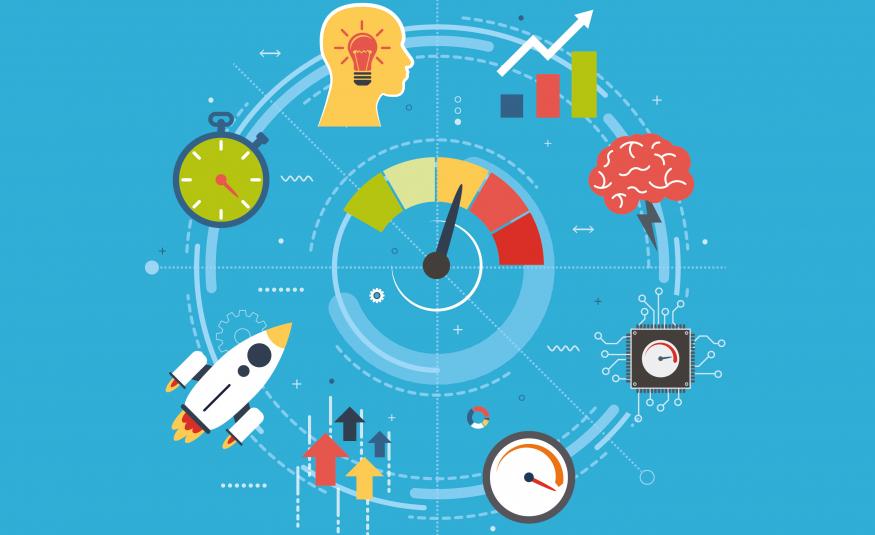Matthias Baur says a changing environment requires a different framework for measuring successful performance.
Financial reward may be the driving force for most businesses, but it is not the only way to measure business success.
Our business environment is not the same as it was 20, 10, or even five years ago and the way in which we measure performance should reflect this. Companies assessing their performance by measuring outdated Key Performance Indicators (KPIs) run the risk of performing within an outdated framework.
As the basic formula, KPIs should align with a company’s strategic objectives, ensuring each department, every unit and all employees, are unified towards the predefined goals and in what needs to be achieved to celebrate success.
Although financial health and sustainability remain imperative to any business, KPIs of today should be purpose driven to motivate change, inspire and empower employees towards growth and innovation. Most importantly, KPIs should remain relevant to what drives today’s world of business.

Are we using the most relevant KPIs as our measurements?
Exhibitions have long since moved away from being simple transactional events to large educational and immersive marketing platforms and now, with the integration of artificial intelligence seeping onto the show floor, they have the potential of growing in complexity, increasing interaction and integration of participantsin these dynamic environments.
With exhibitions evolving, so too must the ways in which we measure their success also adjust. Measuring non-financial performance and efforts to secure repeat business may help to determine the likelihood of future financial success, however we need to push this even further and start to consider return on investment alongside return on engagement, return on time, and so on.
The revenue an exhibition generates may well indicate its current financial success, but it is not necessarily an indicator of its future sustainability and potential.
Customer experience has also been highlighted as one of the most important markers when assessing the success of a service-orientated business. Over the years more companies have made greater effort in understanding their customers and what KPIs they need to zone-in on to maintain a loyal customer base. We all talk about customer centricity and measuring the levels of customer satisfaction but, is it not time to start pushing past what we already know, beyond quantifying simple levels of satisfaction and start dissecting these layers, delving deeper into the specific details of the customer experience?
It is also insufficient to only benchmark ourselves within our own industry, we need to reach beyond our borders, specifically focusing on other customer-driven enterprises, including online services such as Amazon and Alibaba, which continue to grow and progress at a rapid rate. To ensure we do not lag behind other customer-committed platforms, we need to deep dive into other customer-focused industries, to gain a broader understanding of how they measure their performance when it comes to customer satisfaction.
Customer centricity and the modern KPI
Each event is unique, where attention should be given to the type of customer it attracts. The customer category can tell what type of business is being done at the event. Whether it is largely transactional, rather than based around marketing or education. If it is largely transactional, then people with spending power should be flagged as a priority more so than those looking for production partners. It may be that you’re seeing visitors with ‘Developer’ in their title, rather than those with direct buying power.
When applying KPIs to gauge the type of attendee the show is attracting, we should consider including measures such as ‘time spent by the buyer on reviewing a product’ and ‘buyer interaction with the exhibitor’. Indeed, just how long is the buyer’s attention span?
The ways in which attendees interact can tell us a lot about the performance of the event and is also a strong indicator of engagement. But who is best positioned to assess the KPIs a modern exhibition organiser should be using?
With the industry being a lot bolder in the exploration and incorporation of technology and digital innovations to greater influence the customer experience, I asked one technology company whether their clients were presenting them with the kind of KPIs they would expect when it comes to isolating the data they think they require to succeed.
“Some clients do provide us with the KPIs to track, and they are almost always in line with our thinking,” said Mykyta Fastovets from Expoplatform, a UK-based technology provider for business events. “Some clients do ask for suggestions. Which scenario happens depends on how much of an expert the client is in the area that they are trying to measure success in. Often, ExpoPlatform is the expert rather than the client, so it can be down to us to establish KPIs together with the client, and then deliver the data to derive them.”
KPIs used for internal measurement are also being improved by technology. Revenue isn’t the only route to a more attractive bottom line. If that value can be multiplied through the use of modern exhibition tools, such as biometrics or self-scan check-in, or a simple-to-use smartphone-based matchmaking tool, then the overall performance of your operations team is likely to improve.
Engagement can be measured through post-event surveys, but it can also be assessed in a live environment. And, in a digitally enabled exhibition environment, KPIs taken during the event can be used to affect change while the show is ongoing.
Companies such as Explori use technology to help organisers understand and manage audience satisfaction through their Digital Exhibition Management Services. The system enables management to have a clearer view of the customer experience across comparable products and portfolios, enabling them to better understand drivers of loyalty, growth and opportunity.
With event technology being used more and more at events, such as event apps which have now become standard and allow organisers to monitor trends more effectively, engaged attendees can be a KPI themselves.

Making KPIs relevant
A good 10 to 15 years ago, we all realised that quality was more important than quantity and
started vetting the visitors and exhibitors a lot more, paying close attention to the calibre and variety of exhibitors impacting on show standard and the potential to support show evolution.
It may be time to now consider how else we can measure the quality of the experience. The ease of doing business should be measured with the focus on how to increase the opportunity of conducting quality business, providing participants with value-based networking opportunities to conduct quality business done within short time-frames. We should also be open to benchmarking on competing events. Events should not be measured in isolation, they need to keep abreast of competitors to ensure the quality of the industry as a whole is elevated year-on-year.
There is a variety of KPIs that can be included to measure events and company performance which can promote event and industry growth. The question is, are traditional KPIs sufficient or do we need to choose more relevant indicators and, if so, how should we define these new-age KPIs to ensure they are applicable beyond current changing trends?
In a digital, fast-paced world, reinvention, innovation and maintaining the competitive edge should be ingrained in everything we do. Key performance indicators are the tools to keep these driving forces alive. Is it not time for industry associations, organisers and venues should start actively challenging the current status quo and devise new indicators that fit into the demands and dynamics of today’s revolutionising world?
What the KPIs of the future should be is a question we should be formulating to ensure the future of our business.





